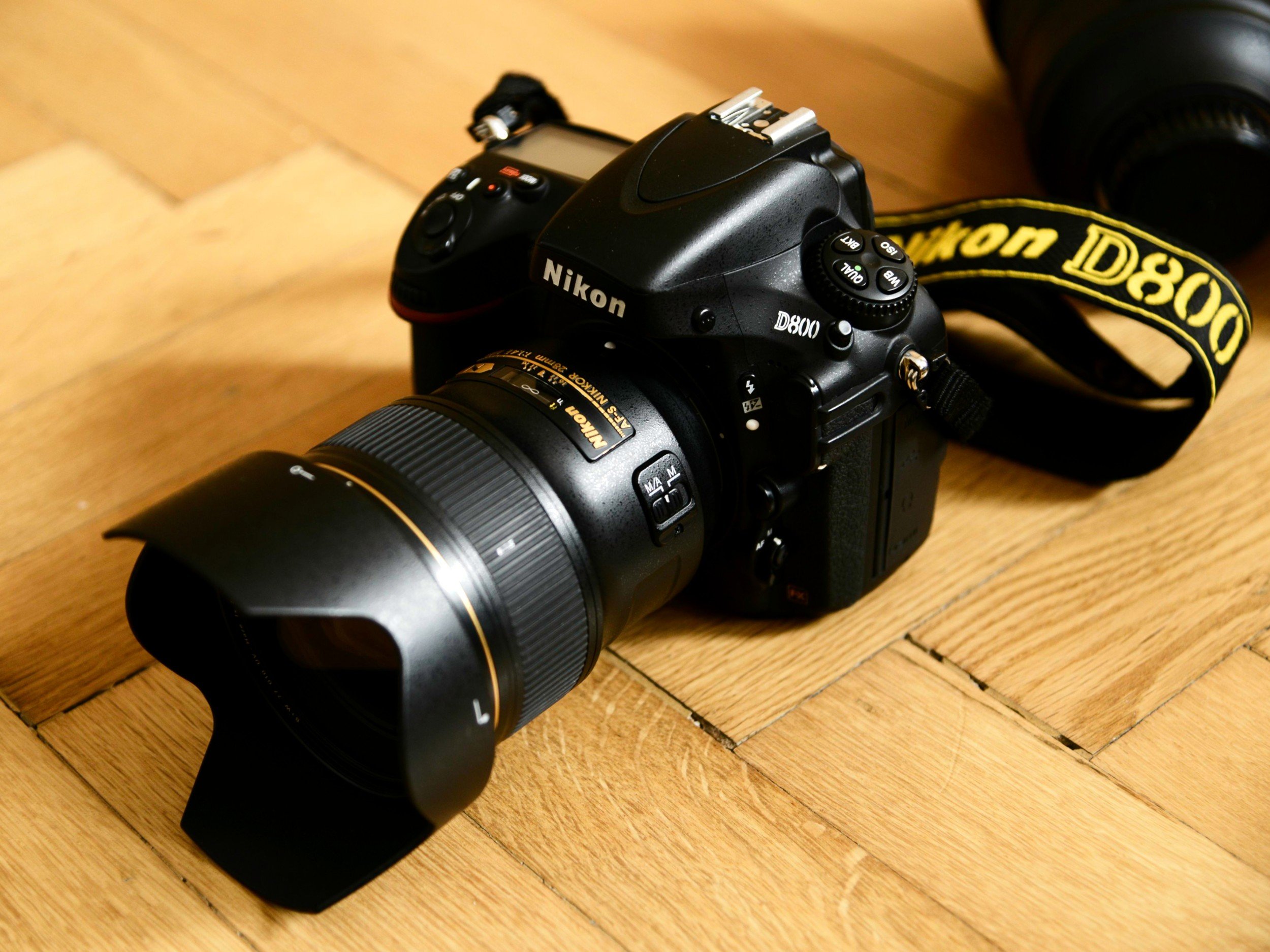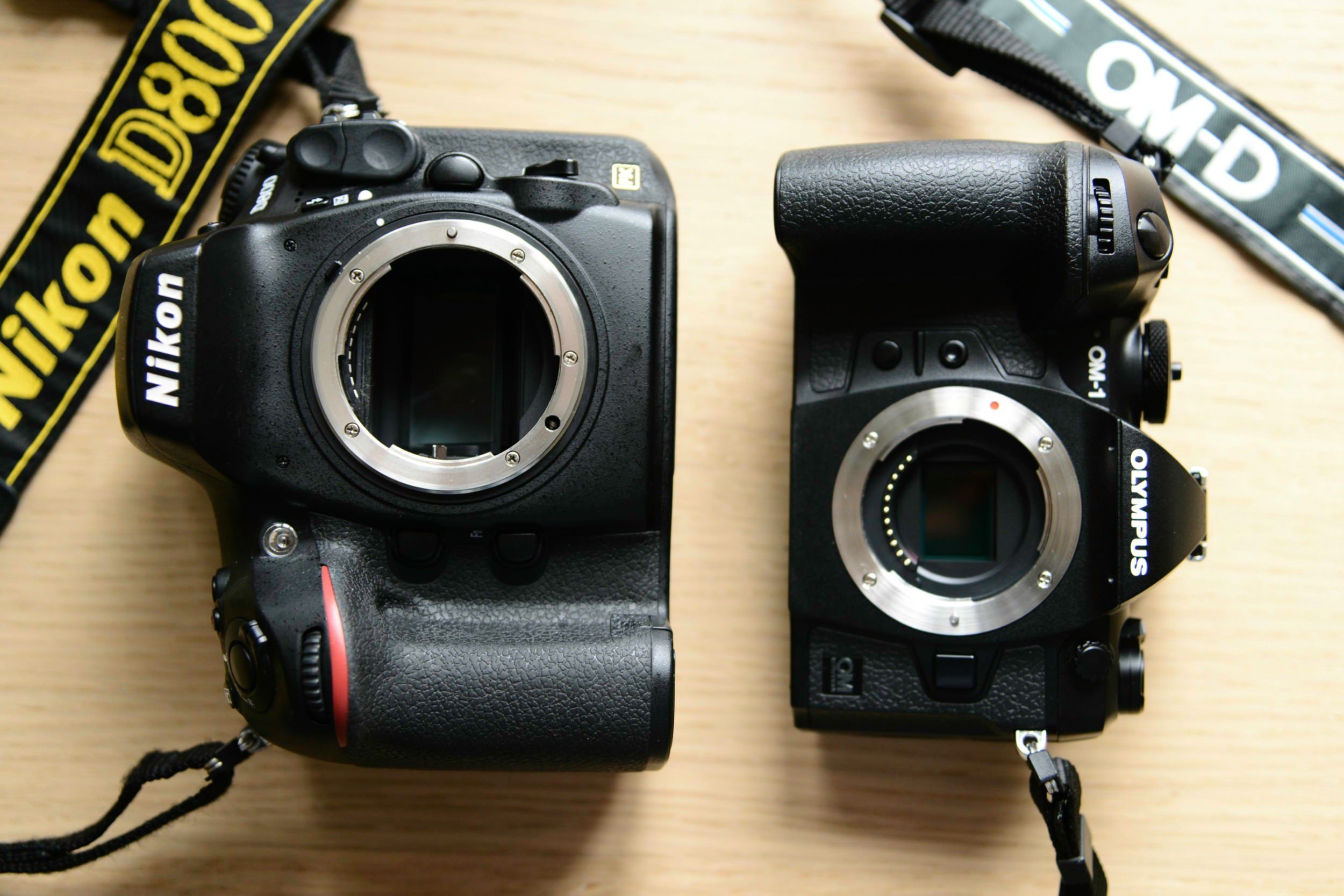Nikon DSLR Setup Compared to Equivalent OM System MFT Setup
Size, Weight, Price and Capabilities
Over the years, I’ve carefully adjusted my Nikon DSLR setup to fit my needs. Now that I got an OM System Setup in addition, it was only natural to get all the equivalent equipment in MicroFourThirds as well.
In this article I’ll compare the two kits in terms of capabilities, size, weight and price.
Comparison
Each of my basic kits consist of two camera bodies, a fast wide-angle, a fast telephoto prime as well as a mid-range f/2.8 zoom. Depending on the type of job, I add an ultra-wide angle prime (around 20mm FF) and a macro lens (around 60mm FF). For the sake of this comparison, I am only considering the basic kit.
Camera bodies: 2x Nikon D800 // 2x OM System OM-1
Fast Wide-Angle: Nikkor 28mm f/1.4E // DG Summilux 15mm f/1.7
Fast Telephoto: Nikkor 105mm f/1.4E // M.Zuiko 75mm f/1.8
Mid-range zoom: Nikkor 28-70mm f/2.8D // M.Zuiko 12-40mm f/2.8 PRO
Outstanding duo - the D800 with the AF-S Nikkor 28mm f/1.4E
Capabilities
Resolution
In terms of raw, technical one-shot resolution, the D800 kit outperforms the OM-1 kit.
The OM-1 does offer a well-implemented handheld high resolution shot mode, that drastically improves the image detail and is – in good light – also usable for portrait subjects.
Low-Light
In low-light scenarios, the Nikon kit has some advantages: The Nikkors have a slightly larger aperture (f/1.4 vs. f/1.7-1.8) and the predominantly ISO-invariant D800 sensor retains detail better when shooting higher ISO.
However, the OM-1’s imaging pipeline and ability to shoot all lenses wide open while still generating enough depth of field help the MFT-system to come closer than expected. Getting the job done in ISO 12.800 scenarios is doable with the OM-1.
Rendering
An interesting feature of a larger sensor is that you can get lots of different “looks” out of it.
By stopping a fast lens down, the depth of field increases to give you a look similar to what an MFT camera produces, but you still have the option of shooting wide open for a different effect.
On a side note: The F-mount lenses in my bag perform very good when shot wide open, but as a rule of thumb, FF lenses love being stopped down while MFT lenses love being shot wide open. Depending on your needs, this might impact the range of usable apertures.
Again, I would not name the D800 as the clear winner right away, as it comes down to preference and use cases.
I myself prefer the wide-angle wide-open look I get from the Nikon kit compared to the OM-1 wide-angle wide-open look. For telephoto shots, it is the other way round, as actually prefer the MFT look.
Image Files & Subjective Image Quality
The D800 feels much more analog, and the captured files seem to reflect that as they are less of a finished image and more like a negative that can be taken in many different directions. The amount of manipulation the D800 files tolerate is incredible.
Image processing was always one of the strong points of Olympus / OM System. Files out of an OM System camera are most of the times perfect without further editing and can be delivered to the client or posted on social media right away. In order to get this magic look, you have to stick to in-camera editing or the proprietary image editing software, OM Workspace.
It is fair to conclude that the revolutionary combination of sensor, ADC and image processing give the OM-1 some tricks to play catch up and achieve impressive subjective image quality.
Auto-Focus
Both the Nikon and the OM have very reliable AF systems – if you mess up with either of these cameras, it is usually your own fault.
Nonetheless, in terms of convenience and versatility, I’d give the OM-1 AF the edge. It is a very impressive camera in that regard.
Being able to compose outside the boundaries of a fixed AF-area gives me more freedom in regards of composition while also reducing the need for post-production cropping quite a bit.
OM-1 - Subject detection AF
Video and Versatility
The D800 is a classic photographic tool, which is impressive in and of itself. It is also quite good as a classic video camera – meaning focusing manually and filming from a stabilized platform.
The OM-1 is very different. It is the most feature packed camera I’ve ever used, and none of the features it has are gimmicky.
Image stabilization, reliable video AF and overall better video output make it a powerful video tool.
Various computational photography modes – some of them found only in OM System cameras – extend its capabilities and work seamlessly thanks to the powerful processor.
Size And Weight
It will come to no surprise, that the OM System kit is far lighter and more compact than the Nikon DSLR kit. But how much lighter is it?
D800 + 28mm f/1.4E = 1.7kg
All in all, the Nikon kit weighs approximately 5kg while the OM kit is only 2.3kg. That is a significant difference and it can be felt when working with the kit.
In the past, when shooting fashion shows, I always brought my stuff back to the studio before attending the after show parties. Last time with my MFT kit, I just went straight backstage. I did not even bring my studio trolley to haul my equipment to the location. My normal Domke F-2 provided enough capacity.
The Domke F-2 can carry my whole setup - without breaking my back. For the Nikon set, I prefer the Manfrotto TOUGH 55 Trolley.
Price
The Nikon kit can be purchased on the second-hand market and all in all, it would cost around 4.000 € right now.
If purchasing everything on the second hand market as well, the MicroFourThirds kit costs 5.800 € at the moment.
This is no surprise to me, and underlines what I’ve said previously – in terms of bang for the buck nothing comes close to a DSLR-setup, even if you add pricey, high-end lenses like the 105E and 28E.
To be fair, if you would settle for older MFT bodies like the E-M1II, the MFT-kit would be significantly cheaper, but also less capable.
Conclusion
After a few months of alternating between the D800 and OM-1, I can already say one thing – a full MFT kit is convenient to handle, very nimble and flexible.
The D800 kit on the other hand gives me a lot of camera – something I also appreciate. The FX D800 is a no-excuses stills machine capable of producing very detailed and sharp images when paired with one of the three Nikkors I previously mentioned.
Studio photography and jobs where I don’t have to carry the camera around my neck all day long are natural habitats for the D800.
Jobs that require travel by train or plane as well as long reportage-style shoots are more comfortable with the OM-1 kit.
The fascinating realization I had is that both kits are good enough for all photographic applications, making it a matter of personal preference and convenience.
Why I Got an OM System OM-1
The Merits of MicroFourThirds
I’m a huge advocate of Nikon DSLRs – nonetheless, I got back into MicroFourThirds by purchasing an OM System OM-1 recently.
Let’s explore the merits of MicroFourThirds.
Size and Weight
A previous blog article of mine was about why 2022 is the best year to pick up a DSLR for professional work. My argument was, that getting a FF mirrorless instead of a FF DSLR does not make much sense, as it costs a lot more and system weight and size do not change significantly. However, I’ve also mentioned that if one really wants to go mirrorless to get a size and weight advantage, MFT is the only real option.
I know that very well, as I’ve started my professional career with the Olympus OM-D M5 Classic and the M.Zuiko 12-40mm f/2.8 PRO.
The idea of having a smaller, yet high-end system was very intriguing to me, and probably the biggest reason why I got the OM-1.
This is how my career started - the Olympus OM-D M5 Classic with the M.Zuiko 12-40 f/2.8 PRO.
User Experience Versus Convenience
If I want to feel like a real photographer, then I have to grab my Nikon D800. The user experience a high-end DSLR offers is unmatched. There is no mirrorless camera that can give me the same shooting experience. A DSLR is as unique as a Leica M rangefinder.
The OM-1, on the other hand, is an incredibly convenient camera. Face detection, full frame AF coverage, in-body stabilization, a sharp electronic viewfinder and a touch screen make it a very manageable imaging tool.
Other small bonuses the OM-1 brings to the table are that the lenses need no AF calibration and that the 20MP files use up less disk space while still offering enough resolution.
The resolution was a huge argument for getting an OM-1. Everything above 24MP takes up so much disk space and therefore costs a lot of money and computing performance in the long run.
Connectivity
Connectivity is a very important trait of the OM-1.
Transferring one or two files to the smartphone for a quick story on Social Media or for the client to take home is a necessity and often expected by the customer.
The OM System Wi-Fi app is very stable, fast and – again – convenient to use.
Also, in terms of tethered shooting, the OM-1 gives me an impressive degree of control over the camera. Especially for reproduction photography, this makes a lot of sense.
OM-1 - connectivity is trump.
Performance and Versatility
I don’t think that DSLM cameras outperform DSLRs in any meaningful way. Both camera types are so different that it does not really make sense to compare a DSLR to a mirrorless camera. It is like comparing a Leica rangefinder to a DSLR.
I expect a camera being able to keep up with my workflow – and I’m regularly pushing the limits of my equipment. So far, the OM-1 did keep up and added a lot of convenience in the video department.
The OM-1 also doubles as my YouTube camera, a role the D800 cannot fill.
OM-1 - Mode Dial
Final Thoughts
Owning a Nikon D800 and an OM System OM-1 currently gives me the best of both worlds.
The unique user experience of a 35mm DSLR, native access to one of the finest mounts in camera history – the Nikon F-bayonet - and the remarkable 36MP sensor of the D800 are nothing I want to give up anytime soon.
The MFT OM-1, on the other hand, combines convenience, performance and unique capabilities – in one compact body.
I love to have both options at my disposal.













